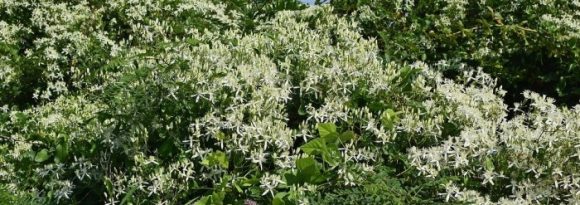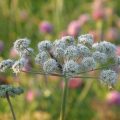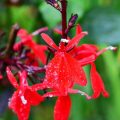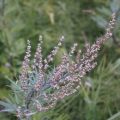- The Miraculous Shiny Bush Plant - January 18, 2021
- Colorful, Edible and Medicinal Celosia - January 10, 2021
- Radish, a Nutritional Power House - December 19, 2020
Common boneset, also known as sweating plant, agueweed, wood boneset, boneset, or wild Isaac, and botanically known as eupatorium perfoliatum, is a flowering plant in the aster family. The plant should not be confused with comfrey which is commonly known as bone knit or in some instances, boneset. Common boneset is native to North America and Canada but was introduced to other regions of the world as a result of colonialization.
[Note: The Right Flowers is not a medical site. Knowledge of and information about the therapeutic benefits and applications of flowers, while known through the ages, does not constitute medical advice. If you are having health issues, you should consult with a physician.]
The plant’s stems have white hair and grow leaves on opposite sides of each other. Bonesets prefer wet, sunny areas and can even thrive in stagnant water for a short period.
Common boneset flowers appear at the top of the stem in clusters. Individual flowers feature 7-11 florets that are white in color. With time, the white florets take on a fluffy brownish-white color as the blossoms mature and give way to seeds that are dispersed by wind.
The plant got the name boneset from its ability to treat dengue, a mosquito-transmitted viral infection that was commonly known as break-bone fever. Dengue was called break-bone fever because it manifested with joint and muscle pains. In addition, the plant has been widely used to treat malaria.
All parts of the boneset were used to treat dengue fever, however, aerial parts were considered more potent especially when in full bloom. The blossoms and leaves are known to contain volatile oils, a bitter flavonoid know as eupatorin mostly used for inhibiting tumor development and treating inflammations as well as tannin acids. In addition, the plant has stimulative, diaphoretic, tonic, antispasmodic, and diuretic properties.
Common boneset was popular among Native Americans who used it as a warm infusion to cause perspiration as a remedy against fevers and to induce bowel movement. When the infusion is cooled and taken as a cold beverage, it is said to have tonic effects.
Since boneset has a bitter taste, the dried leaves and flowers were crushed, mixed with ginger and anise, and enhanced with syrup to make a cough remedy for children.
Boneset was listed in the U. S. Pharmacopoeia as a herbal remedy and in the National Formulary for various ailments up to 1950. Basically, the plant occupied a hallowed place as a medicinal plant for decades before it was replaced by the emergence of conventional pharmaceutical products.
Boneset was not just used for herbal purposes but also for magical purposes. The Chippewa people routinely applied juices of the roots combined with milkweed to a whistle used to summon deer from their hiding places. In other regions, the plant was used to chase away ghosts and protect people against bad omens.
Common boneset might have been displaced by newer medical drugs, but herbalists still swear by it.





